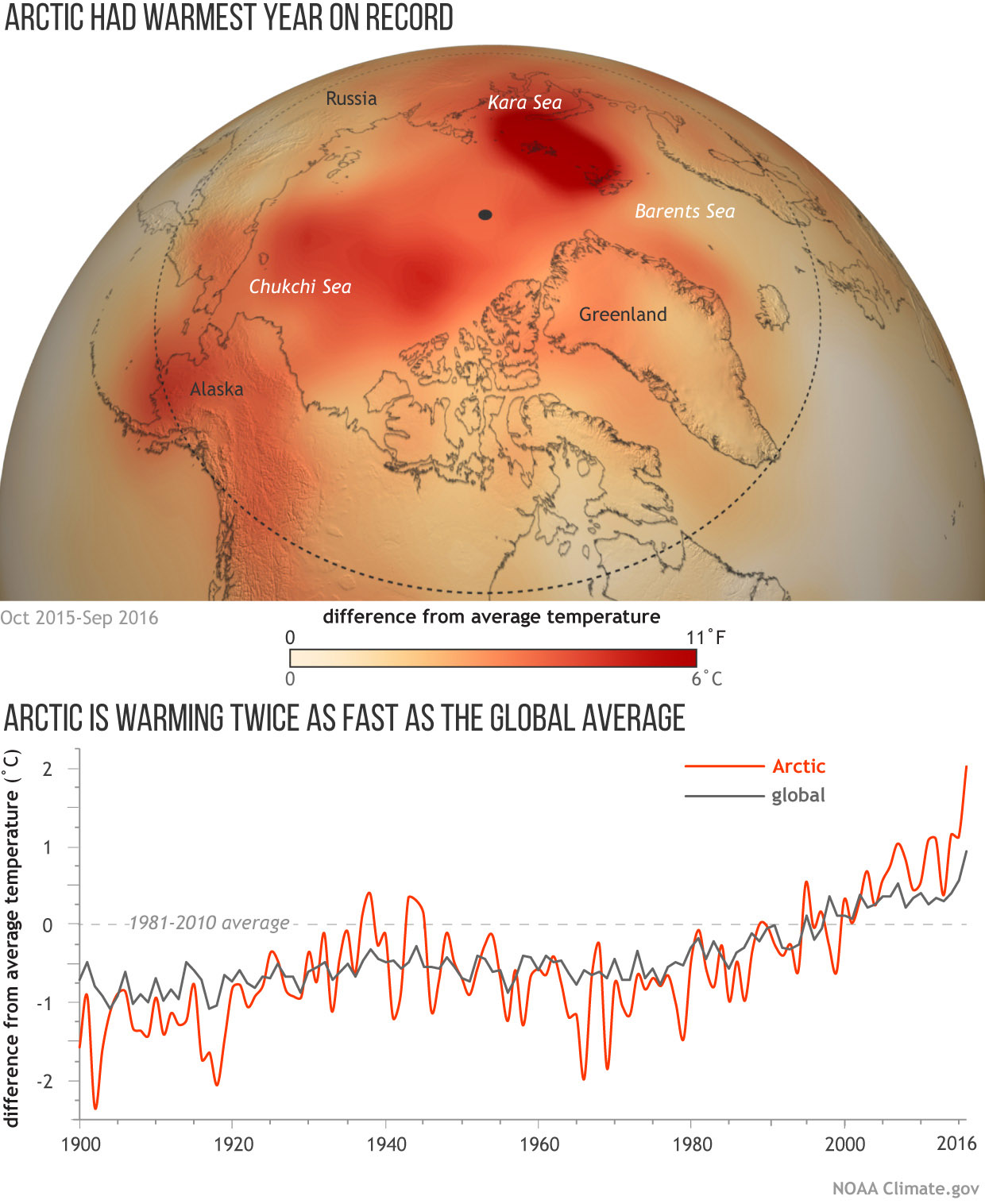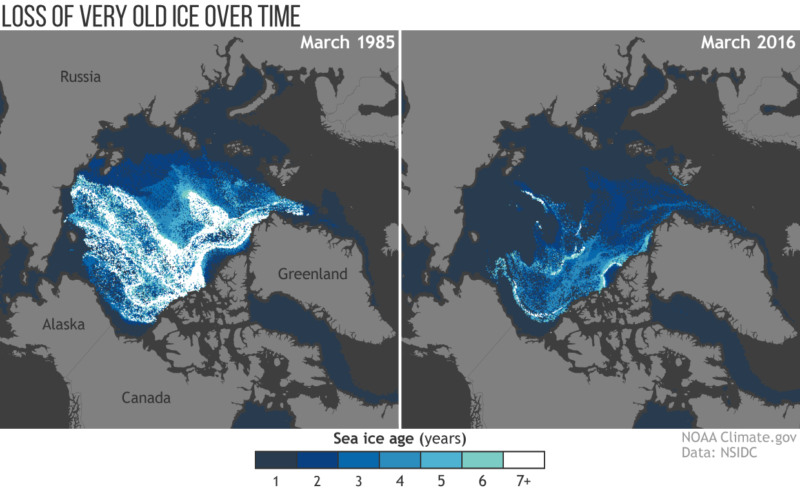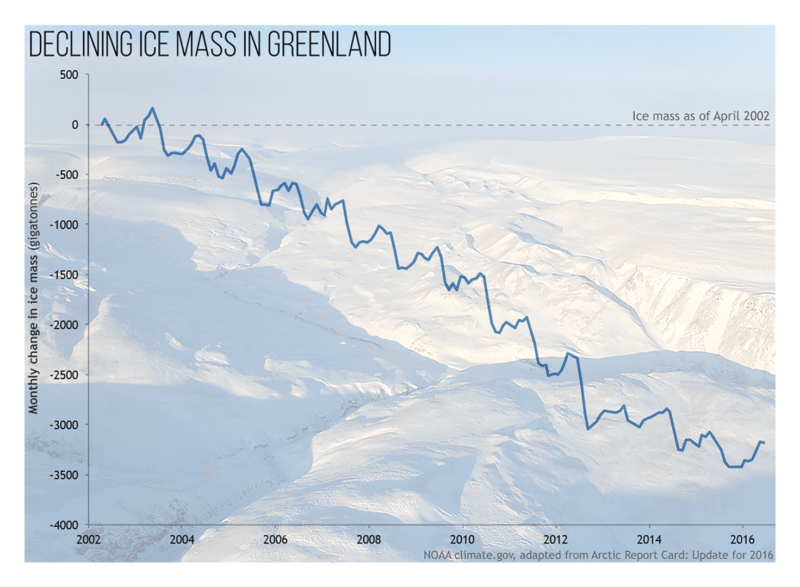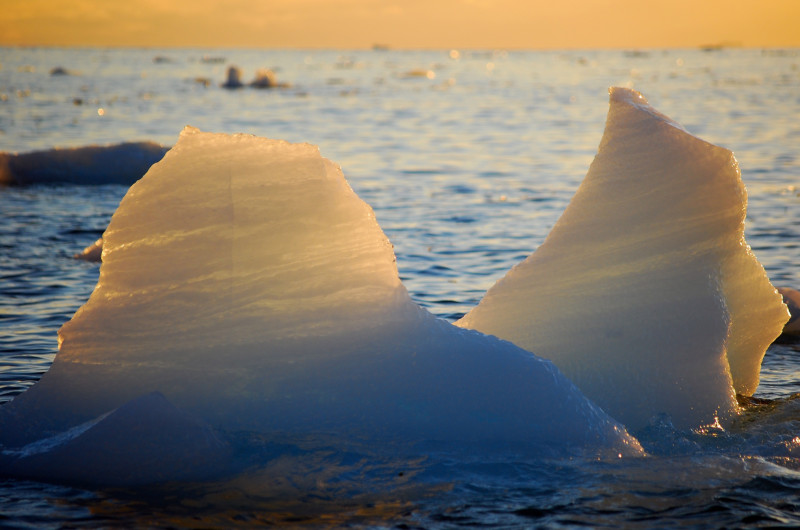Many of the world’s scientists have maintained that the dramatic effects of climate change would affect the Arctic region first. According to a report released by the National Oceanic and Atmospheric Administration (NOAA) on Tuesday, that is exactly what is happening – and much quicker than expected.
The NOAA’s annual Arctic Report Card has combined records of high sea and air temperatures, diminishing ice sheets and glaciers, increased water acidification, as well as rising carbon emissions from newly thawed permafrost. The results show some disturbing trends.
The peer-reviewed report states that air temperatures over the Arctic from October 2015 to September 2016 were “by far the highest in the observational record beginning in 1900.” The average Arctic air temperature at that time was 3.6 degrees (2 degrees Celsius) warmer than the 1981-2010 average. It’s 6.3 degrees (3.5 degrees Celsius) warmer than 1900.

/NOAA Photo
The Arctic warming trends are expanding into seasons beyond summer, when the Arctic usually rebuilds snow and ice. Observations of a 20-year freezing cycle reveal that much of the old ice (one year or more) has completely disappeared, and the new ice, usually generated in the Beaufort Sea, is thawing much more rapidly – and not being replenished.

/NOAA Photo
Without ice and snow surfaces to deflect the sun’s heat, ocean temperatures continue to rise. In 2016, they were 9 degrees (5 degrees Celsius) higher than the 30-year average off the coasts of Greenland.

/NOAA Photo
“Not only is it extreme in any number of measures — air temperature, loss of sea ice and on and on — but there are so many things we haven’t seen, particularly this extremely warm fall,” said study co-author Brendan Kelly, executive director of the Study of Environmental Arctic Change at the University of Alaska, Fairbanks.
With warmer ocean temperatures, ice sheets disappear and Arctic glaciers continue to calve their mass at an accelerated rate.

Ice chunks off the coast of Greenland. Atmospheric and ocean temperatures in the Arctic hit a record high in 2016. /Photo: Greenland Travel
In addition, reduced ice surfaces are eliminating habitats for regional wildlife to hunt, mate, and find shelter.
Another effect of the massive thaw is that, because of chemical makeup of the Arctic Ocean, it is more absorbent of atmospheric carbon (CO2) and is especially prone to ocean acidification (OA). Growing levels of acidification threatens to slow growth or kill off lesser marine species, which are needed in the food chain. Because the food chain in the Arctic is relatively short, this can lead to widespread impacts on upper level species, such as walrus, grey whales and salmon.
The absorption of CO2 in the Arctic waters shows no signs of abating as global atmospheric carbon is still on the rise. Because of human activities, there is approximately 30 percent more carbon in the atmosphere than there was at the beginning of the Industrial Age.
Adding to this, as year-round snow disappears and layers of permafrost thaw in the Arctic region – especially in Greenland – more CO2 is released into the atmosphere. This is occurring at rates beyond what newly emerging plant life can absorb – adding an even larger net gain to the greenhouse gases responsible for climate change.
(Story written by Joshua Barlow of CCTV America)









